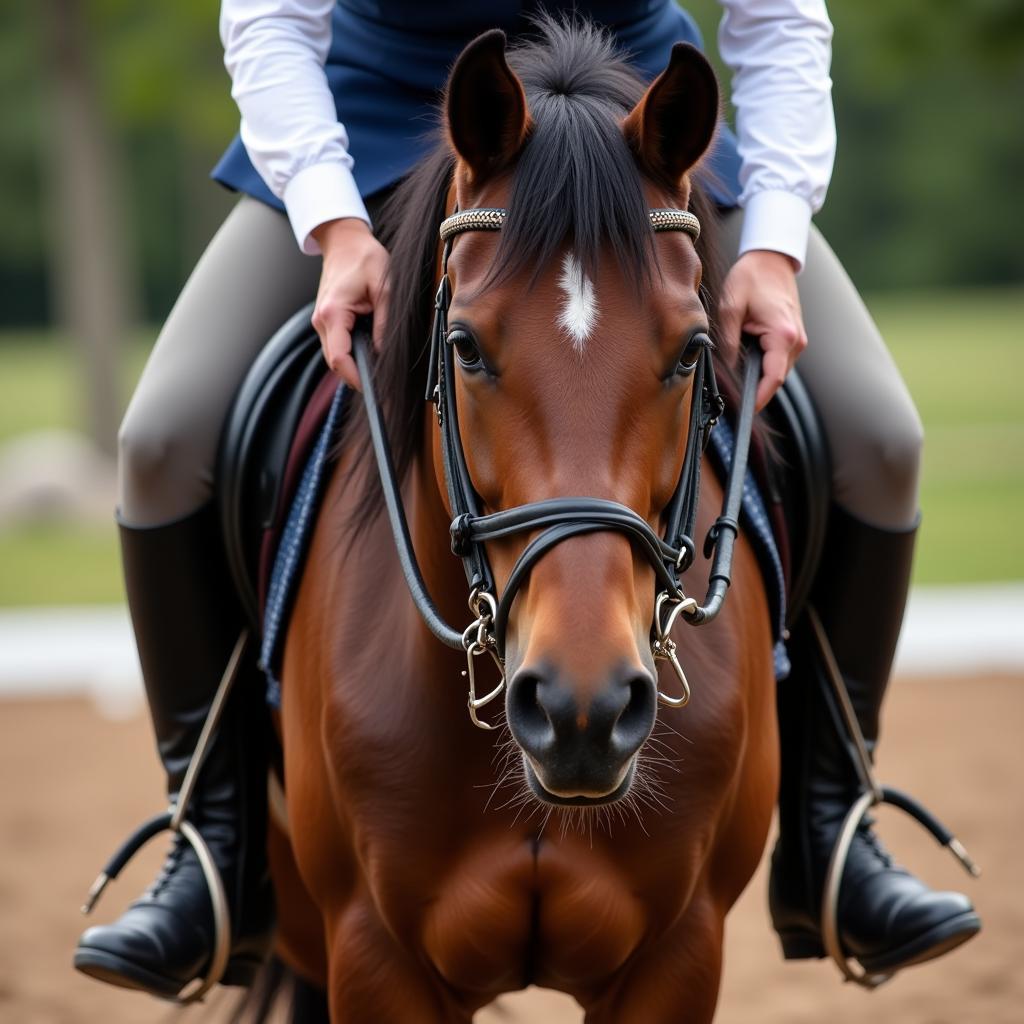Horseback riding, an intricate dance between human and animal, hinges on clear communication. The reins, acting as a direct line to the horse’s mouth, play a crucial role in this exchange. It’s a question that often arises, particularly among novice riders – do horse riders ever cross their hands holding the reins?
The answer, like many things in horsemanship, is not a simple yes or no. While the classical image of a rider depicts hands held steady and uncrossed, certain situations call for a more adaptable approach.
Understanding the Basics: Direct Rein vs. Indirect Rein
To delve deeper, it’s crucial to understand the two primary ways riders communicate with the horse’s mouth:
-
Direct Reining: Each rein corresponds to the same side of the horse’s mouth. A pull on the left rein directs the horse’s nose and body to the left. This method is widely used, especially for beginners, due to its simplicity and clarity.
-
Indirect Reining: This method introduces the concept of “neck reining,” where a rein pressure against the horse’s neck signals a turn in that direction. For instance, laying the right rein against the neck asks the horse to turn right.
 Horse and Rider Demonstrating Crossing Reins for Lateral Work
Horse and Rider Demonstrating Crossing Reins for Lateral Work
Situations Where Crossing Hands Might Be Necessary
While direct reining, with hands uncrossed, forms the foundation of riding, there are instances when crossing hands becomes necessary or even beneficial:
-
Lateral Movements: Advanced maneuvers like leg yielding, shoulder-in, or half-pass often necessitate crossing the reins. This allows for subtle aids and adjustments, encouraging the horse to move sideways while maintaining balance and bend.
-
Riding with One Hand: Certain disciplines, like western riding or polo, require riders to control the reins with one hand, leaving the other free for tasks like roping or wielding equipment. In these scenarios, crossing the reins might be necessary to maintain control and give directional cues.
-
Correcting a Drift: If a horse drifts to one side, a temporary crossing of the reins can help guide it back on track. For instance, if the horse veers right, the rider might briefly cross the right hand over the left to apply a corrective rein aid.
Important Considerations: Technique and Clarity
It’s crucial to remember that crossing hands should never be a default. Riders should prioritize clear communication and avoid confusing the horse with inconsistent aids. Here are some essential points to keep in mind:
-
Maintain Light Contact: Regardless of hand position, maintaining light and consistent contact with the horse’s mouth is paramount. Harsh or jerky movements can cause discomfort and confusion.
-
Use Leg and Seat Aids: Relying solely on the reins for control is inefficient. Effective riding requires a harmonious blend of leg, seat, and rein aids to communicate clearly with the horse.
-
Seek Professional Guidance: If you’re unsure about when or how to cross your hands while riding, consult a qualified riding instructor. They can assess your skill level and provide personalized guidance.
Conclusion: Adaptability in the Saddle
The question of crossing hands while holding the reins doesn’t have a one-size-fits-all answer. While direct reining with hands uncrossed remains the foundation, advanced maneuvers and specific riding styles might necessitate crossing the reins for effective communication.
Ultimately, the key lies in understanding the purpose behind each rein aid and applying it with clarity and consistency. Remember, riding is a partnership, and clear communication between horse and rider is paramount for a safe and enjoyable experience.
Frequently Asked Questions
1. Is crossing my hands while riding a sign of being a bad rider?
Not necessarily. Crossing hands can be a necessary technique for certain maneuvers. It’s important to learn the correct application from a qualified instructor.
2. Can I neck rein with crossed hands?
Neck reining is typically done with one hand, so crossing hands wouldn’t be applicable in this scenario.
3. My horse gets confused when I cross my hands. What should I do?
This could indicate inconsistent rein aids or a lack of clarity in your communication. Work with a trainer to improve your technique and ensure your horse understands your cues.
Need More Help?
Do you have any questions or need personalized guidance regarding horseback riding techniques?
Contact Justus Horses USA today!
Phone: 0772127271
Email: [email protected]
Address: QGM2+WX2, Vị Trung, Vị Thuỷ, Hậu Giang, Vietnam.
Our dedicated team of equine experts is available 24/7 to assist you.